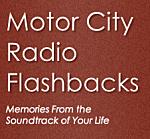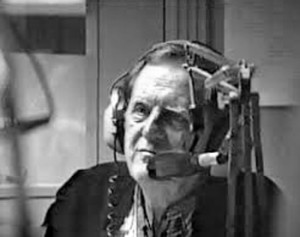 From the MCRFB news archive: 1972
From the MCRFB news archive: 1972
DALLAS — Transitions, instead of jingles, may be the future method of identifying a radio station on the air and, in fact, Bill Meeks is currently developing a musical set of transitions for a progressive rock station in a major market.

Meeks, president of PAMS, the largest jingles firm in the world and creator of jingles for major stations in the U.S., such as WABC in New York and all over the world, says he doesn’t think jingles, as we know them, are appropriate for progressive rock stations and “smooth music” stations.
“Jingles will still be around, but I don’t think they’ll be called jingles. They won’t be straight logos, such as now used by most Top 40 stations, but will more than likely musically identify the station. The radio station will be able to go from record to record without pause, but still identify their call letters or the station itself.”
Meeks, a Texan whose business backyard is the world, says that he has created this type of transitional ID before . . . transitions that have no definitive starting or ending on the cut.
Meeks, who wrote one of the first jingles ever broadcast – an ID for KLIF in Dallas broadcast on November 11, 1947 – now has a staff of 26 people working for his Dallas firm.
In addition, he’s on a rampage at this moment, expanding into other radio fields such as station ownership, marketing of programming for Alto Fonic Programming, producing and marketing programming services and jingles with Dick Starr of Professional Programming in Miami, and partnership in Cybrix, a firm that has a cassette broadcasting system which Meeks says is better than a reel-to-reel system.
In addition to all of this, Meeks is back in college studying music at North Texas State. His musical career extends as far back as the days when he was a staff musician, writer and arranger for WFAA in Dallas. It was about this time that Gordon McLendon hired him and four other WFAA studio musicians for KLIF’s live band. The band used to play lead-ins to KLIF’s various programs, and it was from these lead-ins that Meeks got the idea of using short, punchy intro material to identify a radio station — in short, jingles.
Actually, his musical career started at the age of 14 when he played on the radio with the Ben Ribble’s Humdingers. Later, he played with the Early Bird Orchestra on WFAA and later performed with the Dallas Symphony Orchestra, playing sax and flute. His first commercial jingle was produced by Earl Hayes’ Chevrolet dealership in Dallas.
And his interest in music from a scientific viewpoint has never waned. For example, he has been deeply involved in the studies currently being conducted at Texas Women’s University at Denton, Tex., by Drs. Tom Turrachi and Vance Cotter. The doctors are studying behavioral audio graphics of records, commercials, jingles and news.
Studies are broken down by demographic age groups and economic entities. Some of the test cases are even hooked up so that the sensitivity of their skin can be measured in order to determine their reaction to all of the various elements of programming.
Meeks notes that three New York radio stations were involved in the study- WOR-FM, WABC, and WWDJ – “and the latest ARB showed that the studies were exactly on target. The results of the ARB were predicted by the studies.” END
(Information and news source: Billboard; April 15, 1972)
![]()
